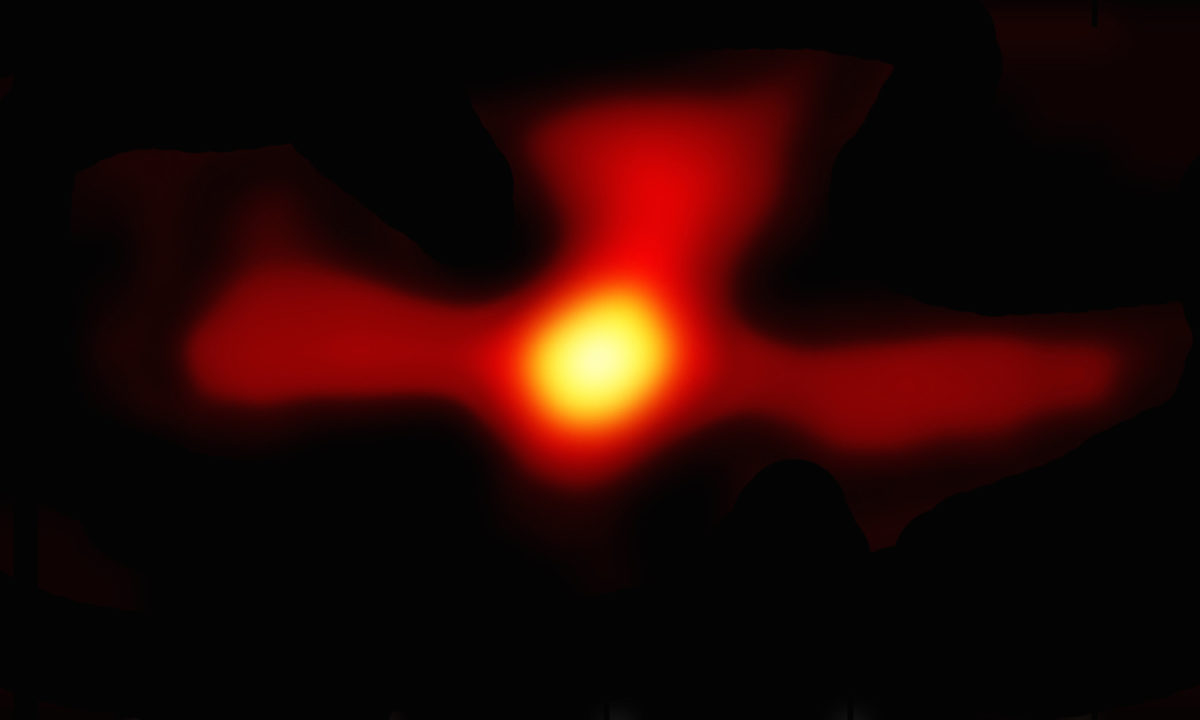Our universe is dominated by matter. Sure, there is dark matter and dark energy, but things like stars, planets and people are made of matter. Protons, electrons, neutrons and such. But matter seems to come in pairs. For every electron created, an antimatter positron is created. For every proton that appears, so does an anti-proton. Since our universe is dominated by matter, what if there is another universe dominated by antimatter? What would an antimatter universe look like?
The basic difference between matter and antimatter is that they have opposite charges. A proton has a positive charge, while an antiproton a negative one. Positively charged positrons are the antimatter version of negatively charged electrons. What’s interesting is that the signs of electric charge are a fluke of history. We could have assigned a positive charge to electrons and a negative one to protons. There’s nothing special about choosing one or the other. So you might think that an antimatter universe would look exactly like our regular one. But matter and antimatter have subtle differences.
One of the main differences has to do with neutrinos. Neutrinos don’t have any charge, so if the sign of charge were the only difference between matter and antimatter, “antimatter” neutrinos would be identical to “matter” neutrinos. But it turns out they are slightly different. Neutrinos have a property called helicity, which describes whether they spin to the left or the right as they travel through space. Matter neutrinos have left-handed helicity, while antimatter one have a right-handed helicity. That might not seem like a big deal, but in 1956 Chien-Shiung Wu looked at the radioactive decay of cobalt-60 atoms. She found that left-oriented and right-oriented atoms decay at different rates. Since handedness is different between matter and antimatter, the two might decay at different rates. This might be the reason why we don’t seen lots of antimatter in the universe.
But suppose there was an antimatter universe that had lots of anti-hydrogen and anti-helium after its big bang, just as our early universe had lots of hydrogen and helium. It would seem reasonable that these could fuse to heavier antimatter elements in the cores of antimatter stars, and this could produce antimatter planets and perhaps even antimatter life. What would these creatures see when they look up into their night sky?
In this case we know it would look much like our own night sky. Recently we’ve been able to produce anti-hydrogen, and we have looked at the type of light it produces. We found that anti-hydrogen produces the same kind of light as regular hydrogen. So an antimatter Sun would emit the same light as our Sun. Light would reflect off an antimatter moon just as it does our Moon, and our antimatter cousins would see a sky filled with stars, nebulae and planets, just like we do.
Of course all of this is based upon the assumption that antimatter would collapse under gravity to form stars in the first place. We think that should be the case, but what if antimatter also had anti-mass? What if anti-atoms gravitationally repelled each other? In that case, an antimatter universe would never form stars or galaxies. Our antimatter universe would simply be filled with traces of anti-hydrogen and anti-helium, and nothing would ever look up at the cosmic sky. While we think antimatter has regular mass, we haven’t created enough of it in the lab to test the idea. For now we can’t be sure.
So it is quite possible that an antimatter universe would look nearly identical to our own. But it could be that an antimatter universe would be nothing but cold gas. It’s even possible that the radioactive decay of antimatter is so different from that of matter, that an antimatter universe can’t even exist.












Comments
Finally, a good first order discussion on anti matter— thank you.
My question is wouldn’t the weight difference of Protons being 1800 times heavier than electrons have a huge impact on anti matter properties? Would atoms even stay together with protons Orbiting? Or, is a positron just a positively charged electron with equal mas to the electron
A proton is a lot heavier than an electron. This is true for matter and antimatter (anti-proton is heavier then positron) In fact, an electron has the same mass as a positron and a proton has the same mass as an anti-proton. You were also asking if protons orbiting something but protons and neutrons are part of the atom nuclei while electrons ‘orbiting’ the nuclei. It has to be said that they are actually not really orbiting the atom nuclei either but are more in a specific sphere around the nuclei. Don’t picture it as a ball orbiting the nuclei.
So, as far as we can tell today: Antimatter atoms follow the same physics as matter atoms – excluded the decay rate as explained within this article. We are also not 100% sure (yet) about the gravitational effect of antimatter atoms, also mentioned within this article.
Personally I find it very interesting that anti-matter could have a repulsive gravity effect and could act like dark energy. But this is all speculation until we have an observation and measure the gravitational effects of anti-matter.
So what if the elusive dark matter actually is the anti-matter universe with anti-gravity and all? And drk photons!
Do you think that one day we may be able to produced anti matter in quantity for use as a means of space craft propulsion?
Physically there’s nothing stopping us. I don’t know if using antimatter would be more effective than other means given the limits of light speed.